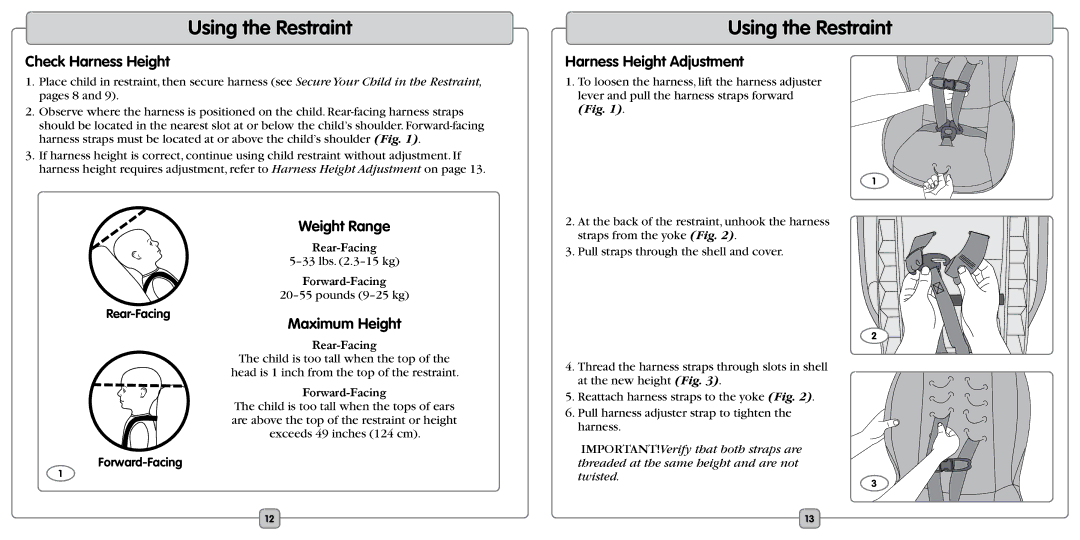
Using the Restraint
Check Harness Height
1.Place child in restraint, then secure harness (see Secure Your Child in the Restraint, pages 8 and 9).
2.Observe where the harness is positioned on the child.
3.If harness height is correct, continue using child restraint without adjustment. If harness height requires adjustment, refer to Harness Height Adjustment on page 13.
Using the Restraint
Harness Height Adjustment
1. To loosen the harness, lift the harness adjuster lever and pull the harness straps forward . (Fig. 1).
1
1
Weight Range
Maximum Height
The child is too tall when the top of the head is 1 inch from the top of the restraint.
The child is too tall when the tops of ears are above the top of the restraint or height exceeds 49 inches (124 cm).
2. At the back of the restraint, unhook the harness straps from the yoke (Fig. 2).
3. Pull straps through the shell and cover.
2 ![]()
4. Thread the harness straps through slots in shell at the new height (Fig. 3).
5. Reattach harness straps to the yoke (Fig. 2).
6. Pull harness adjuster strap to tighten the harness.
IMPORTANT!Verify that both straps are threaded at the same height and are not
twisted.3
12 | 13 |
